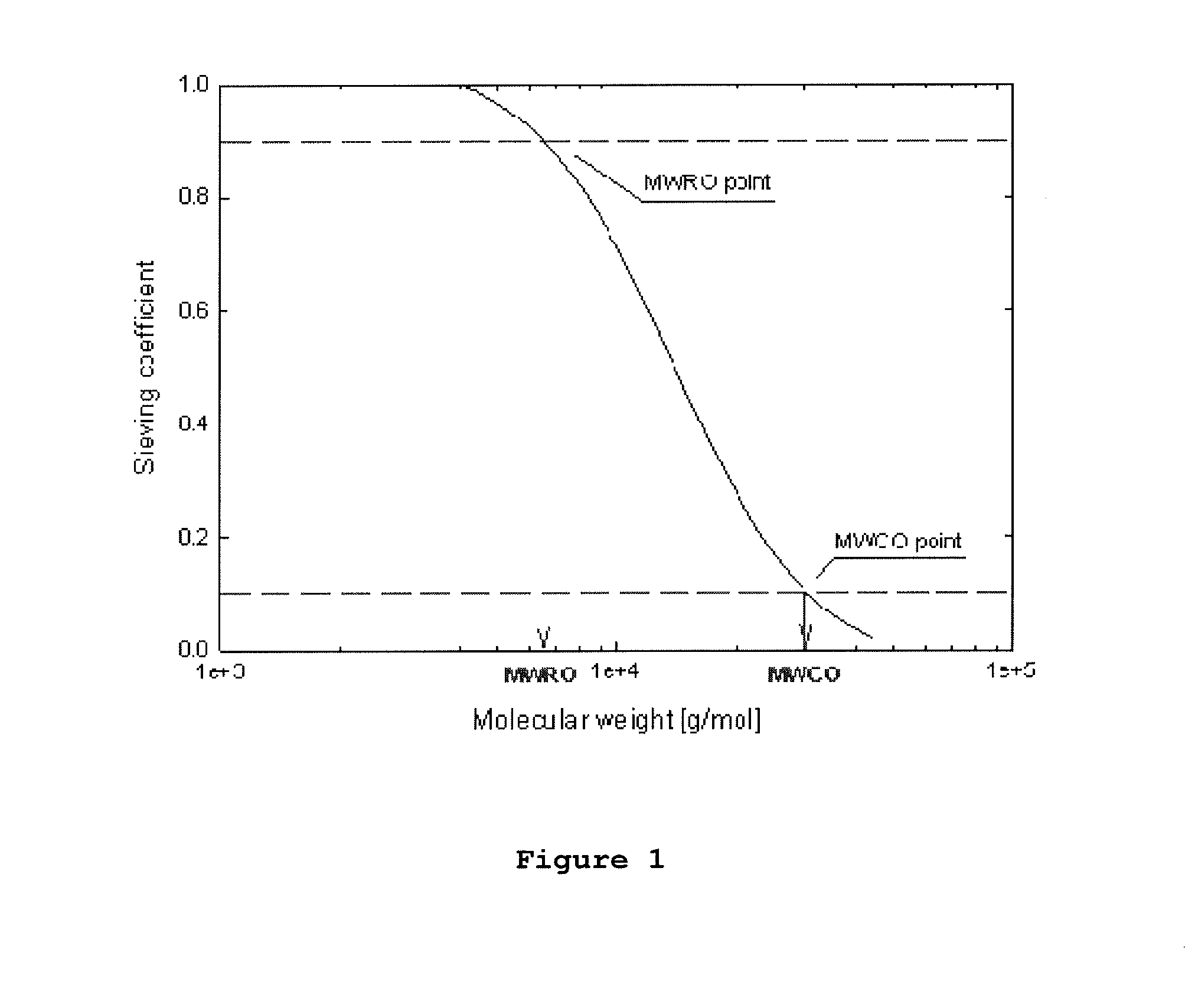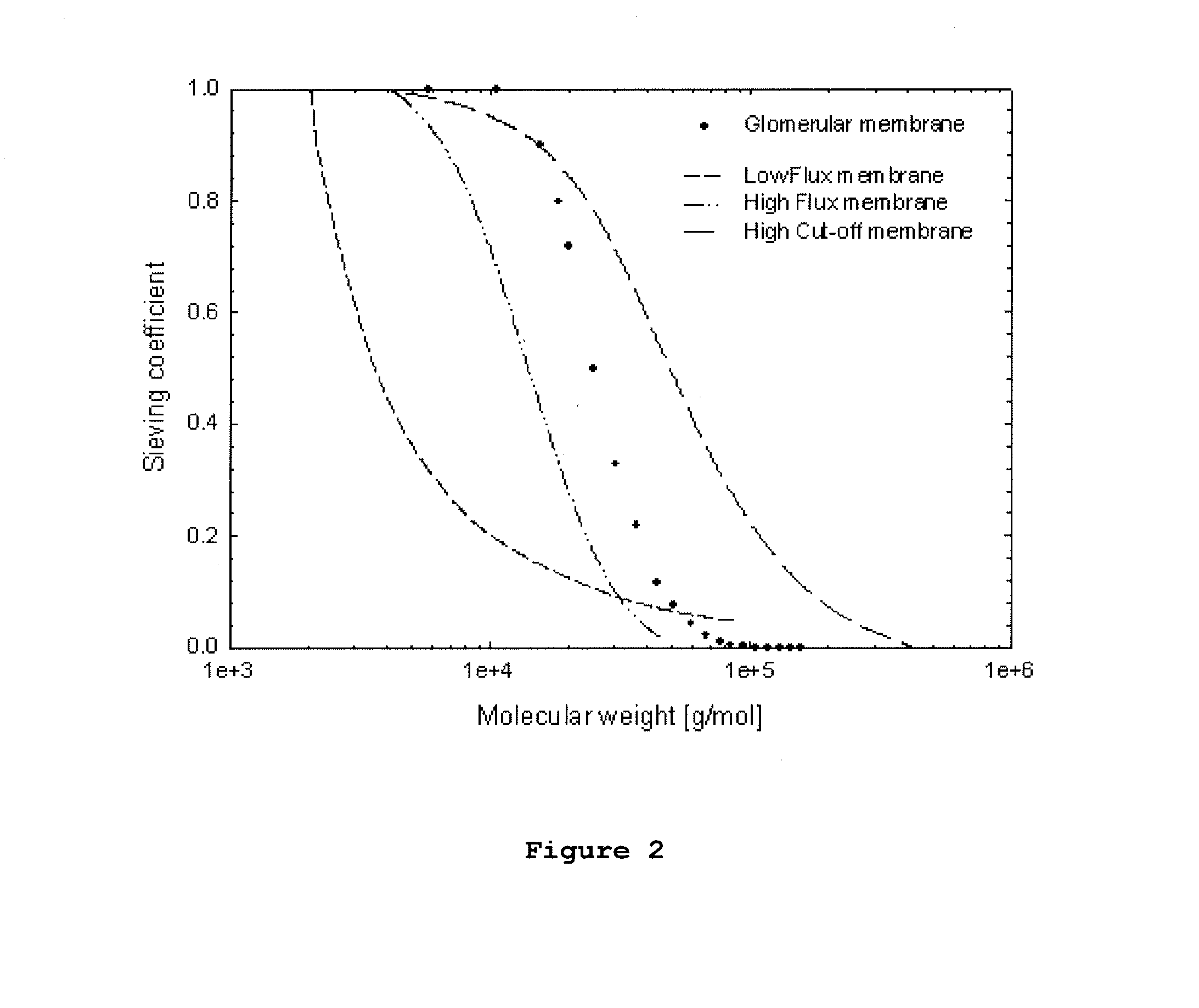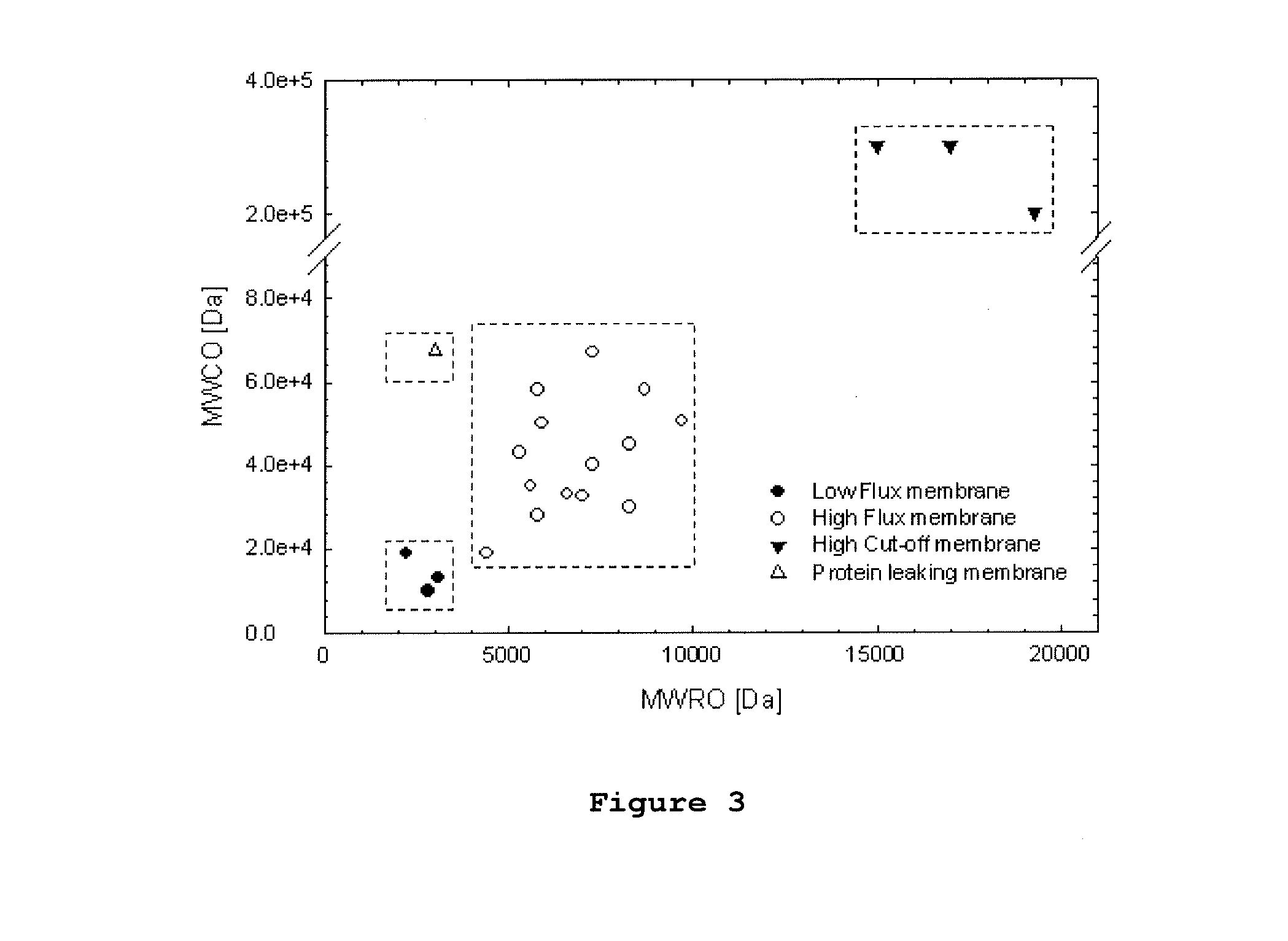Permselective Membrane for Treating Vascular Calcifications in Chronic Hemodialysis Patients
a hemodialysis patient and membrane technology, applied in the field of hemodialysis membrane for the treatment of vascular calcification in hemodialysis patients, can solve the problems of high cardiovascular morbidity and death, calcification remains one of the major unsolved problems of uremic patients, and contributes to the marked increase of cardiovascular risk. , to achieve the effect of effective treatment of vascular calcification, high permeability, and increased clearance of relevant mediators
- Summary
- Abstract
- Description
- Claims
- Application Information
AI Technical Summary
Benefits of technology
Problems solved by technology
Method used
Image
Examples
example 1
High Cut-Off Membrane Preparation
[0080]Two solutions are used for the formation of the membrane, the polymer solution consisting of hydrophobic and hydrophilic polymer components (21 wt-%) dissolved in N-methyl-pyrrolidone, and the center solution being a mixture of N-methyl-pyrrolidone and water. The polymer solution contains polyethersulfone (PES 14.0 wt-%) and polyvinylpyrrolidone (PVP 7.0 wt-%) as membrane building components. The solution further contains NMP (77.0 wt-%) and water (2.0 wt-%). The center solution contains water (53.0 wt-%) and NMP (47.0 wt-%).
[0081]During the membrane formation process polymer and center solution are brought in contact with a spinneret or jet and the membrane precipitates. A defined and constant temperature (58° C.) is used to support the process. The precipitated hollow fiber falls through a humidified shaft filled with steam (100% relative humidity, 54° C.) into a washing bath (20° C., ˜4 wt-% NMP). The membrane is further washed in two additi...
example 2
Preparation of Hand Bundles, Mini-Modules and Filters
[0083]The preparation of a membrane bundle after the spinning process is necessary to prepare the fiber bundle for following performance tests with mini-modules. The first process step is to cut the fiber bundles to a defined length of 23 cm. The next process step consists of melting the ends of the fibers. An optical control ensures that all fibers are well melted. Then, the ends of the fiber bundle are transferred into a potting cap. The potting cap is fixed mechanically and a potting tube is put over the potting caps. Then the fibers are potted with polyurethane. After the polyurethane has hardened, the potted membrane bundle is cut to a defined length and stored dry before it is used for the different performance tests.
[0084]Mini-modules [=fiber bundles in a housing] are prepared in a similar manner. The mini-modules ensure protection of the fibers and are used for steam-sterilization. The manufacturing of the mini-modules com...
example 3
Effects of Dialysis with High Cut-Off Membranes on the Ability of Serum to Induce Osteoblastic Differentiation in MSCs
[0090]The study was conducted in accordance with the Declaration of Helsinki and had been approved by local ethic authorities. All subjects provided written informed consent.
3.1 Isolation and Culture of MSCs
[0091]MSCs were isolated from bone marrow aspirates obtained from 20 healthy bone marrow donors (7 female, 13 male) median age 31 years (range 0.5-42) as described previously (Lange et al. (2007), J Cell Physiol 213, 18-26). All subjects provided written informed consent. In brief, bone marrow mononuclear cells were purified by Percoll density gradient centrifugation, plated at 400,000 cells / cm2 and cultured in α-MEM (#E15-862, PAA) supplemented with 100 U / mL penicillin (PAA), 100 μg / mL streptomycin (PAA), 2 IU / ml heparin (Ratiopharm), and 5% freshly thawed platelet lysate at 37° C. and 5% CO2. Nonadherent cells were washed off with PBS after 2-3 days. Medium was ...
PUM
| Property | Measurement | Unit |
|---|---|---|
| pore radius | aaaaa | aaaaa |
| pore radius | aaaaa | aaaaa |
| pore radius | aaaaa | aaaaa |
Abstract
Description
Claims
Application Information
 Login to View More
Login to View More - R&D
- Intellectual Property
- Life Sciences
- Materials
- Tech Scout
- Unparalleled Data Quality
- Higher Quality Content
- 60% Fewer Hallucinations
Browse by: Latest US Patents, China's latest patents, Technical Efficacy Thesaurus, Application Domain, Technology Topic, Popular Technical Reports.
© 2025 PatSnap. All rights reserved.Legal|Privacy policy|Modern Slavery Act Transparency Statement|Sitemap|About US| Contact US: help@patsnap.com



